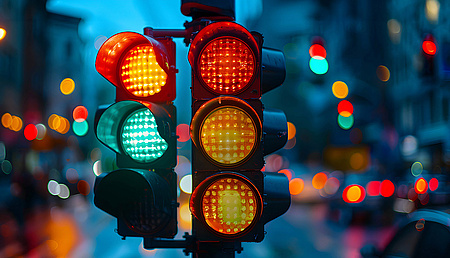
Common misconceptions when managing trademarks internationally
Ask many business professionals what a trademark is, and you will probably hear them reference well-known logos and slogans for restaurant chains or car manufacturers. However, the trademark as a piece of Intellectual Property can encompass many types of source identifiers that quickly tell consumers what quality they can expect from a product or service.
Companies engaged in any form of international business will want to pay particular attention to trademark rules, which can differ from country to country. Here is a shortlist of common misconceptions many companies make when figuring out how trademarks work into their global business plans.
1. Trademark protection only covers the use of our logo
A corporate logo that instantly resonates with consumers would qualify for trademark protection in any jurisdiction recognizing trademark rights. Still, it is not the only type of mark that can be registered. A few dozen countries also acknowledge word marks that claim certain words or phrases without specifying any particular font, color or design elements. Such a mark could be used to protect a company's name or a specific product line in various advertising materials.
While many trademark offices already admit a wide variety of marks, important court cases or agency actions sometimes expand the ability to register non-traditional marks. For instance, the U.S. has accepted protections for scent marks. In May 2018, the U.S. Patent and Trademark Office approved a trademark registration filed by the toy company Hasbro covering the scent of Play-Doh. Non-traditional marks are difficult to register because they cannot serve a functional purpose, and scent marks are especially challenging to obtain. Scents and flavors themselves are not inherently distinctive because they are characteristics of goods, so applicants typically have to submit evidence of acquired distinctiveness that demonstrates that consumers recognize that scent or flavor as a source identifier. Only 13 scent marks were active in the U.S. as of the Play-Doh scent registration. However, many types of trademarks like color, sound or even animated motion marks may be available to your company depending on the marks recognized under a particular country's laws. This is also a trend in the EU where recently, the graphic representability requirement has been removed.
2. We cannot protect a trademark that is not actively being used in commerce
Proof of use or a declaration of intent to use a mark is a requirement of the U.S. and Canada's trademark registration process, but not every country requires them. The more than 100 member countries that have acceded to the Madrid Protocol international trademark system must implement legal frameworks consistent with that treaty, which does not impose use requirements upon member countries. However, many countries without use requirements have rules regarding situations in which third parties can pursue the cancellation of a mark for non-use.

3. As long as we are registered in a few notable countries, we can sell our brand anywhere
Registering a trademark in one country does not guarantee any protection to the trademark owner in another country, no matter how closely intertwined it may be economically. One notable exception is the European Union, where the EU's trademarks are granted uniform protection across all member states. Also, registrants filing into a country covered by the Madrid Protocol can file international applications through the World Intellectual Property Organization (WIPO), which can specify multiple countries where the trademark application should be filed. Of course, translations or transliterations of trademarks may be necessary but can be expensive, especially when filing into countries like China, which use languages with characters very different from Western alphabets. Today's companies should be thinking globally with their business plans and balancing the costs of trademark applications with the value they perceive by registering marks in essential markets.
4. We will have universal law rights to our trademark just by using it in commerce
There is some truth to this statement in the U.S. and other countries that observe common law judicial systems. Nevertheless, many countries have civil law systems that do not confer rights to protect a trademark without registration. France, Germany, Japan, South Korea and China each employ civil law systems that observe statutory law as precedent by prior case law. Without judicial precedent to create trademark rights outside of registration, companies operating in those countries have no Intellectual Property to protect in a trademark that is not registered. The lower proof of use requirements observed by many of these countries helps to counteract these stricter regimes.

However, even in common law countries, the use of a logo or slogan in commerce does not confer trademark rights that are protectable nationwide. In the U.S., common law trademark rights are only protectable within a particular state or region where the mark is being used. Such reasons could ripen into a national brand, but only registering the mark offers companies the ability to exclude mark users in a region where the company does no business. Further, it is much harder to research common law marks not listed on a registry, leaving your company at risk of operating with a brand that infringes on another that might have more substantial common law rights.
5. Once we have registered the mark, it is protected forever
Aside from the fact that many countries require trademark owners to pay fees to maintain their trademark rights after registration, there are many ways that a mark can be lost if an owner is not careful. While many countries do not have policing requirements as stringent as the U.S., many jurisdictions have rules governing when a mark may be abandoned for inactivity or lost if it becomes generic. Further, the loss of trademark rights in one country can negatively impact elsewhere, especially for trademark applications filed under the Madrid Protocol. If a registrant loses trademark rights in their home country during the first 5 years following the date of the International Registration, those rights can be forfeited in other countries covered by the Madrid Protocol application.
6. We can use the "®" on our product packaging wherever our trademark is registered
While the ® symbol is widely recognized as signifying that a particular trademark has been registered, there are varying norms on product marking that may be accepted by different countries in which you operate. In the UK, printing the word "registered" or even just the abbreviation "RTM" can signify that a mark has been registered. Although the "TM" symbol can show consumers that a trademark is not registered but does have some common law rights, that symbol is not useful in Europe and other countries that do not recognize such common law rights. Further, improper product marking is no minor issue; in Germany, the incorrect use of the ® symbol with unregistered marks can lead to an unfair competition lawsuit. Businesses must understand differences in the legal regime for trademarks from country to country.
Navigating trademark rights successfully is becoming even more complicated in our global economy. Trust a partner like Dennemeyer, who has experience managing trademarks and other IP rights across any border.
Filed in

Slight variations in evidence can lead to vastly different outcomes in disputes — and prior decisions cannot be relied on as indicators of success.



